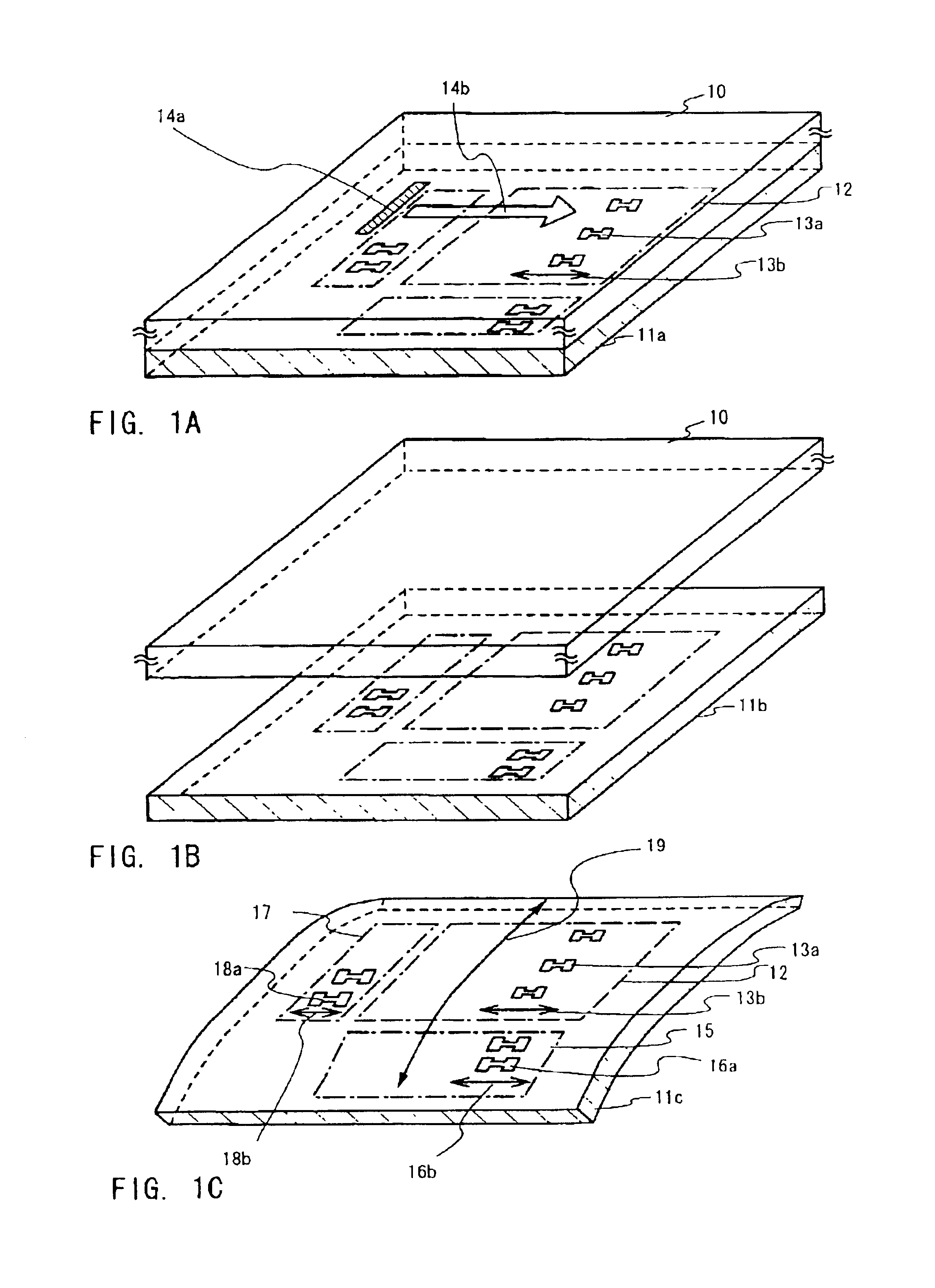Semiconductor device and manufacturing method thereof
a semiconductor and manufacturing method technology, applied in the direction of radiation control devices, identification means, instruments, etc., can solve the problems of low heat resistance of plastic film, easy cracking and heavy above the substrate, and inability to use large-sized glass substrates and large-sized quartz substrates, etc., to achieve high field effect mobility and substantial increase of field effect mobility
- Summary
- Abstract
- Description
- Claims
- Application Information
AI Technical Summary
Benefits of technology
Problems solved by technology
Method used
Image
Examples
embodiment 1
[Embodiment 1]
[0064]Here, an example of laser processing apparatus suitable to the present invention will be described.
[0065]Crystallization of amorphous silicon by laser annealing is conducted through a melting-solidification process. More specifically, the case where it is divided into two stages, that is, a stage of generation of crystal nucleus and a stage of crystal growth from the nucleus is considered. However, in the case of laser annealing using a pulse laser beam, a generation position of crystal nucleus and a generation density thereof cannot be controlled but left to natural generation. Thus, a crystal grain is formed at an arbitrary position within the surface of a glass substrate and only a small size of about 0.2 μm to 0.5 μm is obtained. A large number of defects are caused in a crystal boundary. This is considered to be a factor limiting the field effect mobility of a TFT.
[0066]It is considered that a method of conducting crystallization with melting solidification ...
embodiment 2
[Embodiment 2]
[0096]The example of the top gate TFT is descried in Embodiment 1. Here, an example of a bottom gate TFT will be described. Also, the structure except for the TFT is the same one as Embodiment 1 and the description is thereof omitted here.
[0097]Next, steps of crystallizing a non-single crystalline semiconductor film and producing a TFT from the formed crystalline semiconductor film will be descried with reference to FIGS. 7A to 7D.
[0098]FIG. 7B is a longitudinal cross sectional view. A non-single crystalline semiconductor film 503 is formed on a gate insulating film 506 covering a gate electrode. A typical example of the non-single crystalline semiconductor film 503 is an amorphous silicon film. In addition, an amorphous silicon germanium film or the like can be applied. The thickness of 10 nm to 200 nm can be applied and may be further increased in accordance with a wavelength of a laser beam and an energy density thereof. In addition, it is desirable to employ such a...
embodiment 3
[Embodiment 3]
[0110]The peeling method of conducting peeling by utilizing film stresses of two layers (stress strain) is used in Embodiments 1 and 2. A peeling method is not particularly limited. For example, a method of providing a separate layer between the layer to be peeled and the substrate and removing the separate layer by a chemical solution (etchant) to separate the layer to be peeled and the substrate can be used. Alternatively, there can be used a method of providing a separate layer made of amorphous silicon (or polysilicon) between the layer to be peeled and the substrate and irradiating laser light thereto through the substrate to release hydrogen contained in the amorphous silicon, thereby producing gaps to separate the layer to be peeled and the substrate.
[0111]Here, an example in which amorphous silicon (or polysilicon) containing a large amount of hydrogen is used for the separate layer and laser light is irradiated to the separate layer for peeling is shown in FIG...
PUM
| Property | Measurement | Unit |
|---|---|---|
| thickness | aaaaa | aaaaa |
| temperature | aaaaa | aaaaa |
| thicknesses | aaaaa | aaaaa |
Abstract
Description
Claims
Application Information
 Login to View More
Login to View More - R&D
- Intellectual Property
- Life Sciences
- Materials
- Tech Scout
- Unparalleled Data Quality
- Higher Quality Content
- 60% Fewer Hallucinations
Browse by: Latest US Patents, China's latest patents, Technical Efficacy Thesaurus, Application Domain, Technology Topic, Popular Technical Reports.
© 2025 PatSnap. All rights reserved.Legal|Privacy policy|Modern Slavery Act Transparency Statement|Sitemap|About US| Contact US: help@patsnap.com



